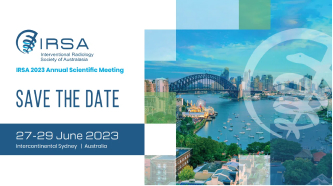Last updated on August 19, 2023
Infertility is a growing concern, affecting up to 1 in 6 couples in Australia.1 Main causes of female infertility include fallopian tube abnormalities, ovulation disorders, endometriosis & unexplained infertility. For some of these couples, the use of Lipiodol for an HSG procedure may provide a less costly, less invasive, and more natural solution over other assisted reproductive technologies (ART).2,3
“Multiple studies have confirmed that Lipiodol enhances fertility in women with unexplained infertility and endometriosis. It is a quick and simple diagnostic procedure that can be performed without anaesthetic” says Dr Emmeline Lee, radiologist and specialist in obstetric and gynaecological imaging.
Lipiodol is a pale yellow, oil-based liquid (sometimes known as poppyseed oil). An HSG is a non-invasive procedure monitored by x-ray, whereby a contrast agent such as Lipiodol is slowly infused through a catheter into the uterus, to visualise the fallopian tubes and uterine cavity.
Scientific evidence suggesting increased fertility rates following Lipiodol flushes have been recognised by the TGA, notably a large multicentre randomised trial from the Netherlands, where the ongoing pregnancy rate in women following an HSG with Lipiodol was 39.7%, compared to 29.1% using another product.3 These findings correlate to those found in the early 2000’s in neighbouring New Zealand, where twice as many women with unexplained or endometriosis-related infertility became pregnant in the 6 months following an HSG with Lipiodol (38.4%) compared to those who did not undergo the procedure (16.5%).2,4
Even after 100 years of use, the mechanism-of-action contributing to this fertility benefit remains unknown; a mechanical tubal flushing is thought to contribute, as well as an immunobiological effect on the endometrium and modulation of peritoneal macrophages, dendritic and regulatory T cell profiles in the peritoneal cavity.2,5-7 Lead investigator of the aforementioned FLUSH trial2,4 and several others, Auckland-based gynaecologist and reproductive endocrinology subspecialist Professor Neil Johnson describes the ongoing findings as “the most significant evidence-based development in fertility in the last couple of decades”.8
Recent analysis from the United Kingdom suggested an HSG with Lipiodol as the most cost-effective strategy from the patient’s perspective9, and a long-term economic evaluation from the Netherlands trial concluded it as the preferred strategy for tubal testing in women with unexplained infertility, commenting further that it may be less time-consuming, and a good first step before ART.10 Depending on the healthcare provider, currently the use of Lipiodol in Australia may incur an additional cost and/or prescription, and may include referral to a different healthcare specialist to perform the procedure.
Perth-based Dr Emmeline Lee is one such performing radiologist, also heavily involved in training junior doctors, “Now that Lipiodol can be used on-label therapeutically, this exciting development will give sub-fertile women more alternatives in their assessment and treatment, and to increase their chances of falling pregnant.”
Media Contact Jade Ollerenshaw
Jade.Ollerenshaw@Guerbet.com |+61 429 025 097



